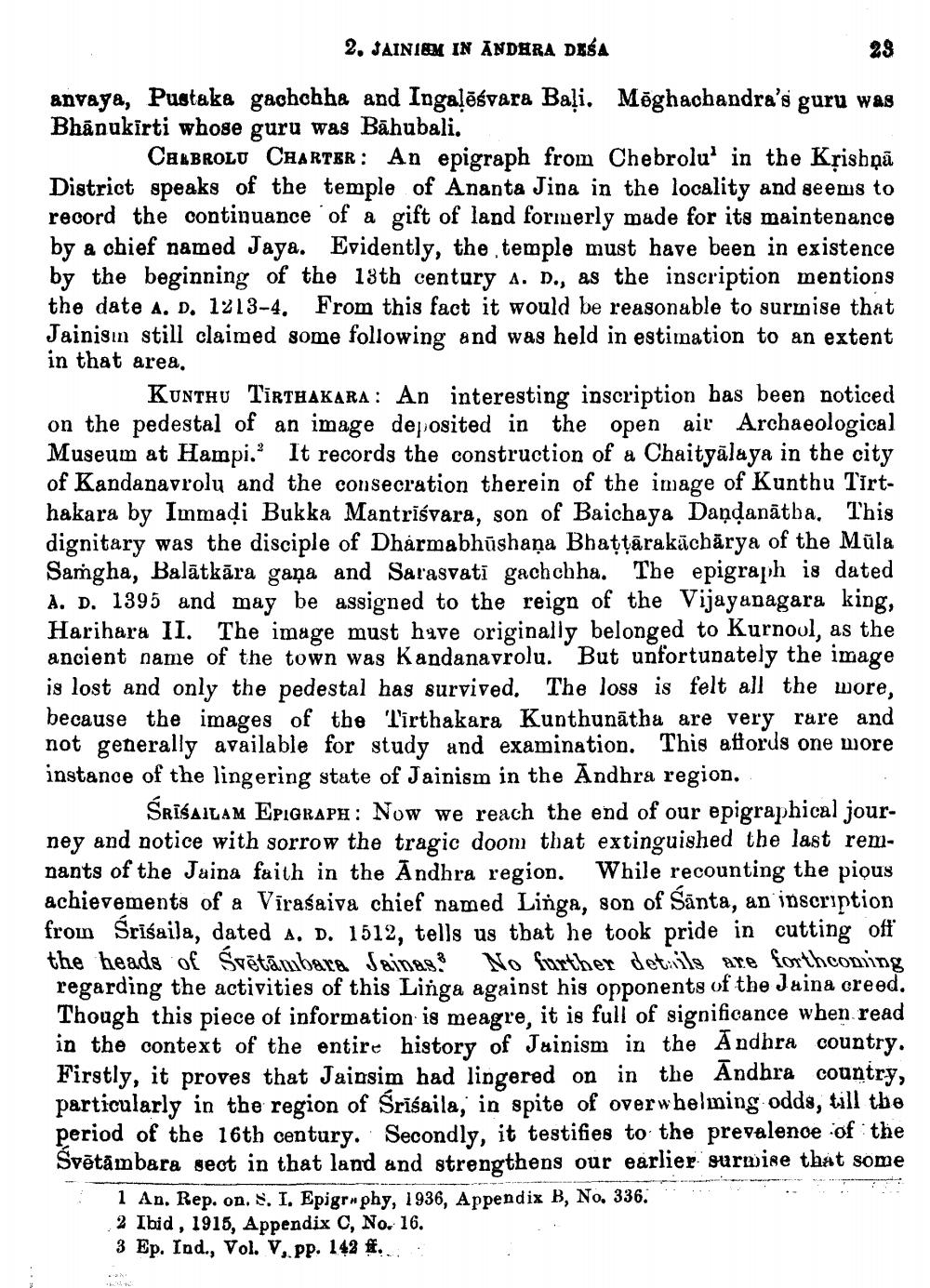________________
2. JAINISM IN ANDHRA DESA
anvaya, Pustaka gachchha and Ingalēśvara Bali. Möghachandra's guru was Bhānukirti whose guru was Bāhubali.
CAABROLU CHARTER: An epigraph from Chebrolu' in the Krishņā District speaks of the temple of Ananta Jina in the locality and seems to record the continuance of a gift of land formerly made for its maintenance by a chief named Jaya. Evidently, the temple must have been in existence by the beginning of the 13th century A. D., as the inscription mentions the date a. D. 1213-4. From this fact it would be reasonable to surmise that Jainisin still claimed some following and was held in estimation to an extent in that area.
KUNTHU TĪRTHAKARA: An interesting inscription bas been noticed on the pedestal of an image deposited in the open air Archaeological Museum at Hampi. It records the construction of a Chaityālaya in the city of Kandanavrolu and the consecration therein of the image of Kunthu Tirthakara by Immadi Bukka Mantrīśvara, son of Baichaya Daņdanātba. This dignitary was the disciple of Dharmabhūshaņa Bhatýārakächārya of the Mūla Samgha, Balātkāra gana and Sarasvati gachchha. The epigraph is dated A. D. 1395 and may be assigned to the reign of the Vijayanagara king, Harihara II. The image must have originally belonged to Kurnool, as the ancient name of the town was Kandanavrolu. But unfortunately the image is lost and only the pedestal has survived. The loss is felt all the wore, because the images of the Tirthakara Kunthunātha are very rare and not generally available for study and examination. This aftorus one more instance of the lingering state of Jainism in the Andhra region.
SRISAILAM EPIGRAPH: Now we reach the end of our epigraphical journey and notice with sorrow the tragic doom that extinguished the last remnants of the Jaina faith in the Andhra region. While recounting the pious achievements of a Virasaiva chief named Linga, son of Sānta, an inscription froin Srisaila, dated A. D. 1512, tells us that he took pride in cutting off the heads of Svētāmubara Jainas? No further details are forthcoming rege arding the activities of this Linga against his opponents of the Jaina creed. Though this piece of information is meagre, it is full of significance when read in the context of the entire history of Juinism in the Andhra country. Firstly, it proves that Jainsim had lingered on in the Andhra country, particularly in the region of Srisaila, in spite of overwhelming odds, till the period of the 16th century. Secondly, it testifies to the prevalenoe of the Svētāmbara geot in that land and strengthens our earlier surmise that some
1 An. Rep. on. S. I. Epigr. phy, 1936, Appendix B, No. 336. .2 Ibid , 1915, Appendix C, No. 16. 3 Ep. Ind., Vol. V, pp. 142 f. .




